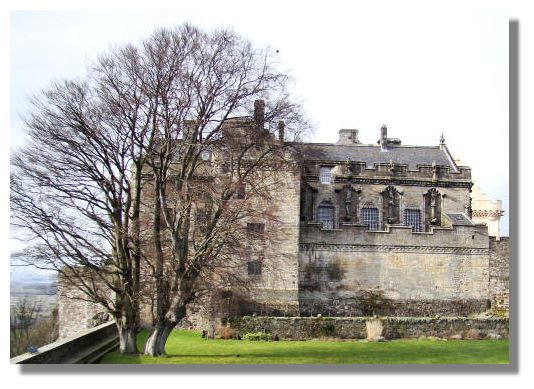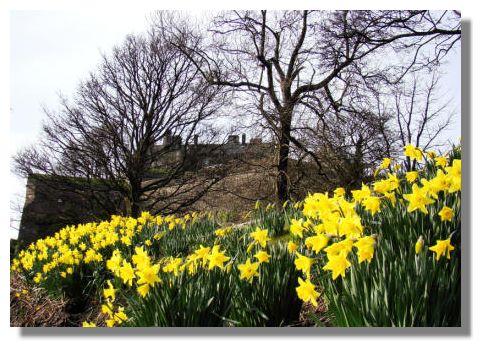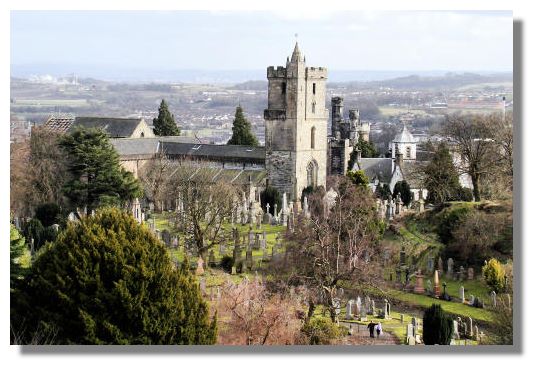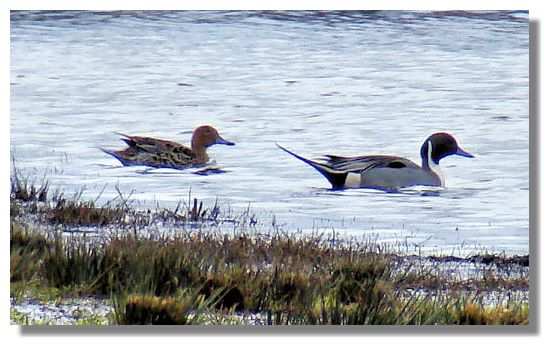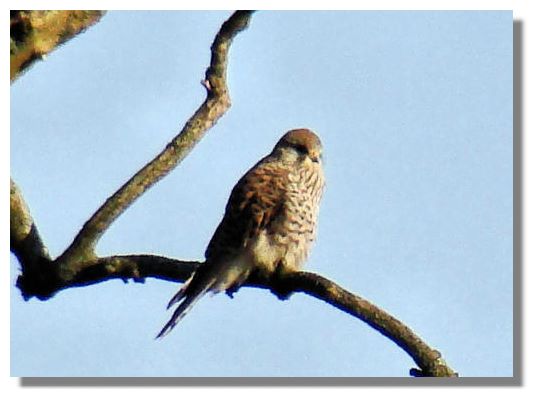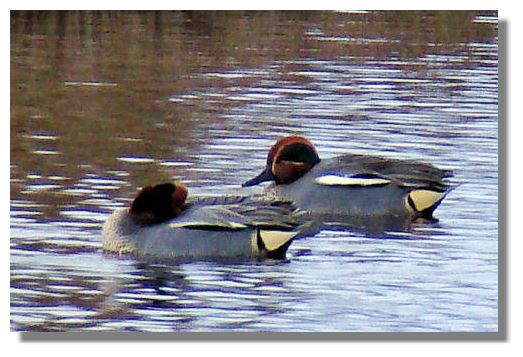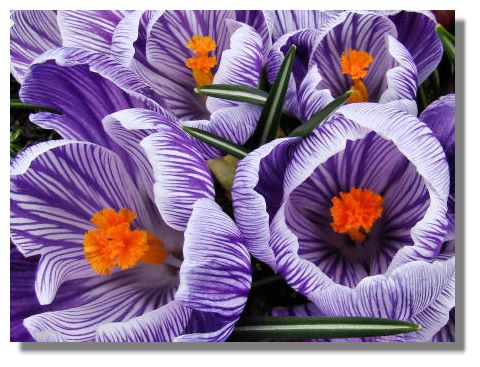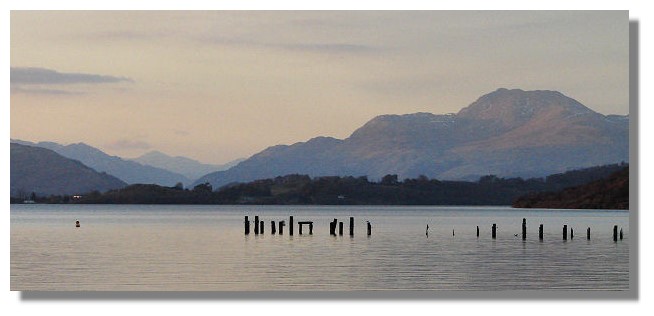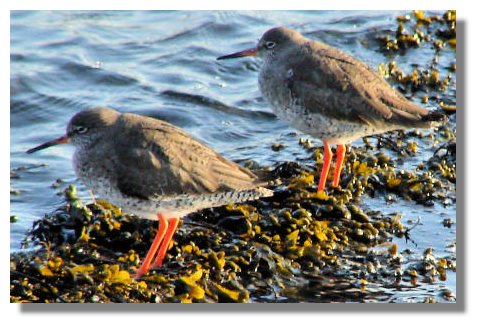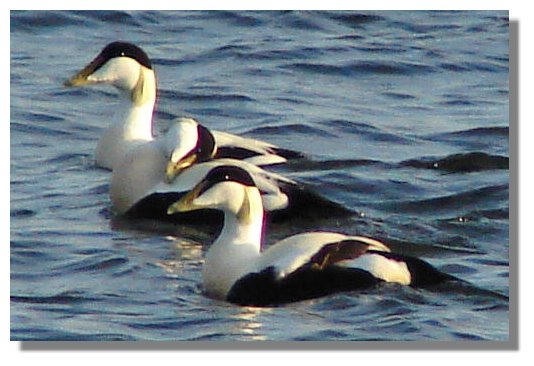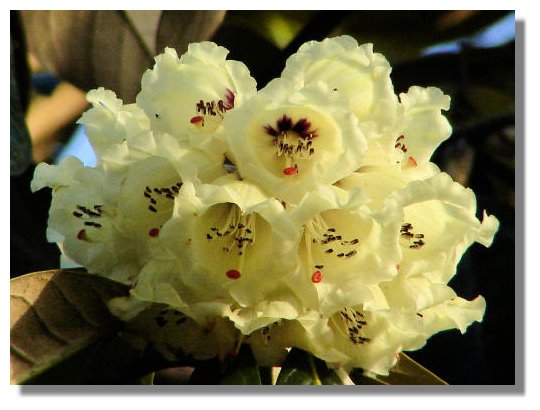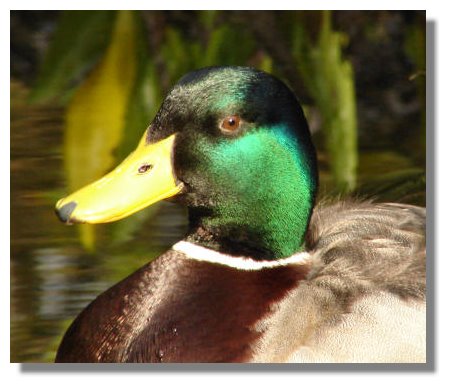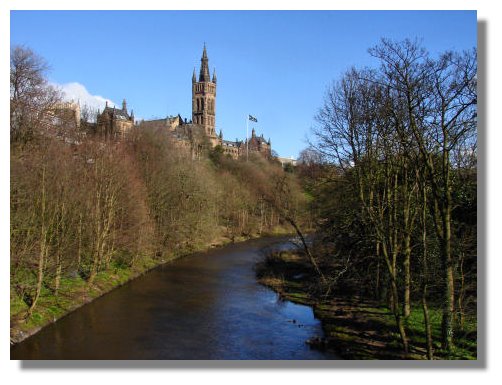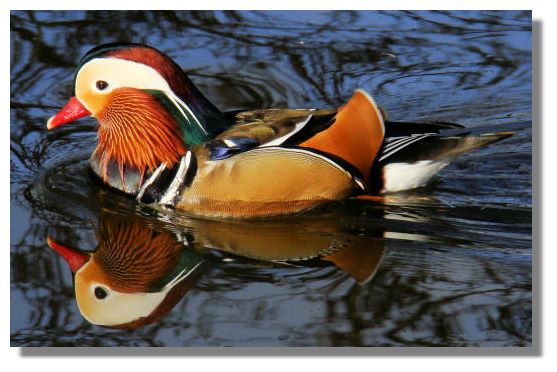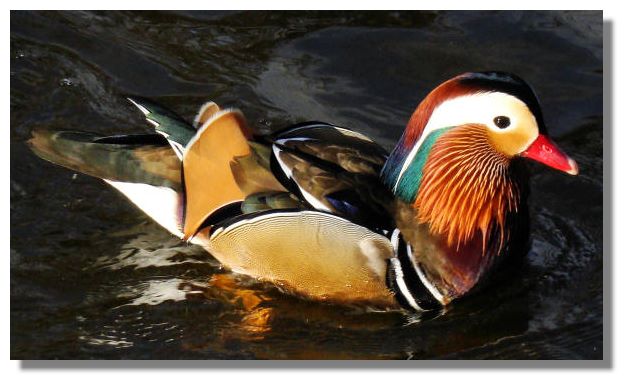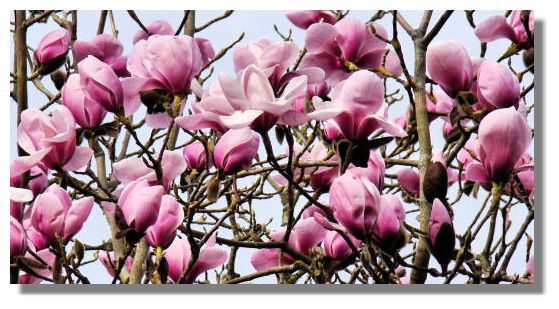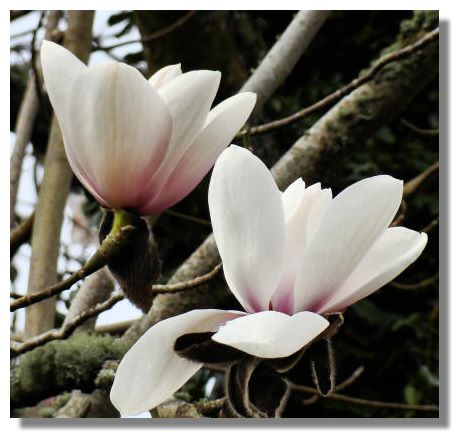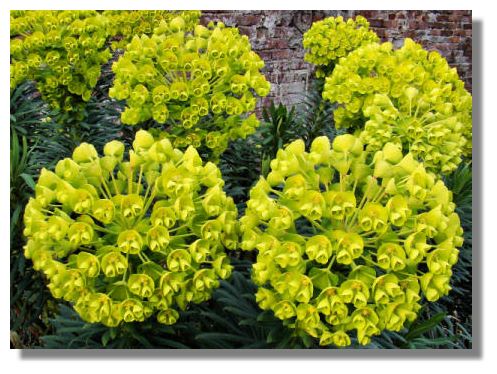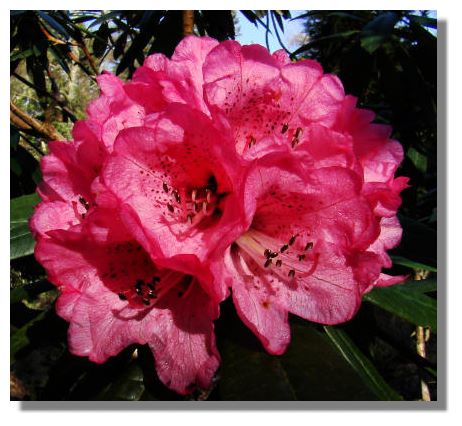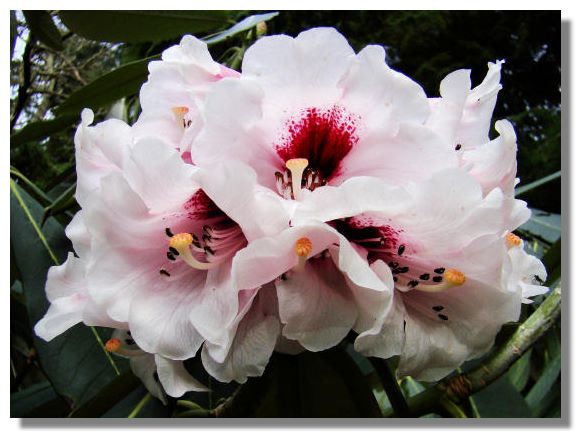It was a dull and grey when this photo of Stirling Castle was taken. The bare branches of the tree, however, allow a clearer view of the Palace building which was under construction in the 1540s for King James V. The classical facade, with its ornate statues, was one of the earliest in Britain and was probably due to the French masons employed by James. The sculptures include representations of Planetary Gods, the Devil and King James himself.
Beneath Stirling Castle, however, banks of flowering daffodils brightened the scene considerably.
Below Stirling Castle, looking towards the city itself, is the Church of the Holy Rude, the last remaining Scots church to have staged a Coronation - that of the infant King James VI in 1567. He was 13 months old at the time and his mother, Mary Queen of Scots, had been forced to abdicate in his favour after she had married the Earl of Bothwell.
Pintails are slightly larger than the more common Mallard duck and many of the birds found in Scotland and the UK come from Iceland to over-winter, with about 28,000 individuals escaping the harsher climate further north. The distinctive plumage (and two elongated tail feathers) is sported by the male until after the breeding season. Then they moult between July and September, when and the colouring becomes similar to that of the female.
Kestrels are often seen hovering above hedgerows or embankments beside motorways, seeking out their prey with sharp eyes - and claws. But they also regularly perch on posts or walls - or as in this case, the bare branches of dead trees. Numbers of kestrels have declined, probably due to more intensive farming.
Teals are slightly smaller than Mallards and although some breed in Britain, most of the nearly 200,000 found in winter in the UK have come from Iceland and northern Europe, reaching these shores in October and November, leaving again in March. The bird on the left decided to do a bit of preening, just as the camera shutter opened...
These crocuses have featured on a number of occasions in this feature over the last few weeks, initially as they first broke into bloom at the end of February and now fully open - so long as it is bright enough for them to unfurl their petals.
I never get tired of taking photographs of Loch Lomond in its many moods and guises. This shot, taken in the late evening in late March is radically different from a bright, sunny summer's day - but Ben Lomond (on the right) and the mountains fading into the distance in the "gloamin" (twilight) provide their own beauty.
No problem remembering the name of these birds - Redshanks. "Shank" was an old English and Scots word for leg. These two were feeding on the shore at Helensburgh, on the Firth of Clyde. Earlier, I had disturbed one of them as I tried to get too close for a photograph. It flew off with a loud alarm call but landed beside its mate, not far way. They both kept a careful watch on me, but the telephoto lens did its work! Redshanks are found all around the coasts of Britain and Ireland.
If the Eider Duck in the middle had not decided to preen himself just as I pressed the shutter, this would have been a perfect line-abreast formation. I suppose I should be grateful that they stayed on the surface - it's not unusual to take a photo and find that they have dived under the water and all that's on the graphic is a patch of water... The joys of nature photography! This trio were part of a large group feeding in the Firth of Clyde, off Helensburgh. The lime green on the side of the male's head is most distinctive amongst UK birds.
Glenarn Garden in Helensburgh is justifiably famous for its rhododendrons, many of them early-flowering varieties. This large, private garden is open to the public from 21 March to 21st September (with donations to charity in an "honesty box"). Some of the trees there were planted in the 1850s, notably a Rhododendron falconeri at the side of the house. Various plant hunting expeditions added a great many plants over the years. When the Thornley family arrived there in 1983, there was a lot to be done to restore the gardens to their former glory. A lot has been achieved (I've even noticed the difference over recent years in particular) and the work is continuing.
The Mallard is one of the commonest ducks to be found in Britain and tends to be taken for granted. But when the sun glances over the iridescent feathers of the drake, it produces a most attractive picture.
Here is a picture of the University of Glasgow, with the river Kelvin below. The university was founded in 1451 but moved to this site in 1870. The magnificent main building was designed in the Gothic style by Sir George Gilbert Scott. With its prominent position on the top of a Gilmorehill, it is visible from all over the city and beyond its boundaries.
As its name implies, the Mandarin Duck originated in China. It was introduced into ornamental wildfowl collections in the UK as far back as the 18th century, but over the years many escaped into the wild. There is now an estimated population of 7,000 in Britain - mainly in the south of England, but with a smaller number in Lancashire in the north of England. They are not often seen in Scotland but this one - resplendent in its spring breeding plumage - calls in regularly at the Swan Pond at Culzean Country Park.
If an artist had been given the task of letting his imagination run wild to create the most colourful duck, he would have been hard pushed to equal the colours and design of the Mandarin. Not only has it an amazing colour scheme, its uniquely shaped inner wing feathers form "sails" at the back. Although it is slightly smaller than the numerous Mallards found at Culzean, this particular specimen was a feisty individual and aggressively went after any bread thrown by visitors on the bank. It only deferred to the much larger Swans!
Despite the cold, sometimes frosty weather in recent weeks, the blossoms on the tall Magnolias at Culzean has continued to swell and break out of their velvety covering. Ten days ago, there were only a few glimpses of pink breaking through the buds of this tall Magnolia tree - this week they are covered in blooms. Magnolias often have a strong scent, but at least at the moment the flowers are too high to sniff!
In addition to the pink varieties, Culzean has a number of white Magnolias, with just a blush of pink at the base of the petals. Technically they are not petals but "petal-like" structures known as tepals. Like a number of other spring flowers, they make a more dramatic show because the leaves are not yet out and the flowers are silhouetted on bare branches.
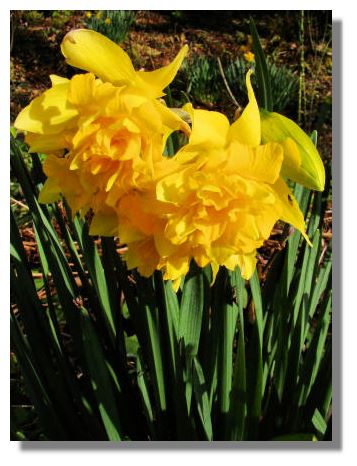
Throughout Culzean Country Park are drifts of different types of daffodils (Narcissus). This double daffodil, with a frilly trumpet, is particularly attractive.
There are nearly 2,000 different varieties of Euphorbia, ranging from tiny annuals to large trees. The "flowers" are actually bracts called "cyathium". This variety is a bush growing in a long flower bed below Culzean Castle. Most of the other plants are grown for their colours in summer or autumn, so this early variety, covered in its bright pom-pom like flowers (each larger than a fist) stood out like a beacon.
We are not yet in the main season for Rhododendron flowers, but Culzean Country Park has a wide variety of these lovely plants, including some that come into bloom early. This deep crimson one grows in the woods, beside one of the many paths that criss-cross the estate. As a result, many visitors to the country park miss out on these.
Modern plant breeders can produce Rhododendrons in every flower colour except true blue and they also blend two or more colours to create flares in the throats of the trumpets. This one is also has particularly large blooms.
If you want to look back at other editions of these photos of Scotland week by week, there is an Index Page

Where else would you like to go in Scotland?


